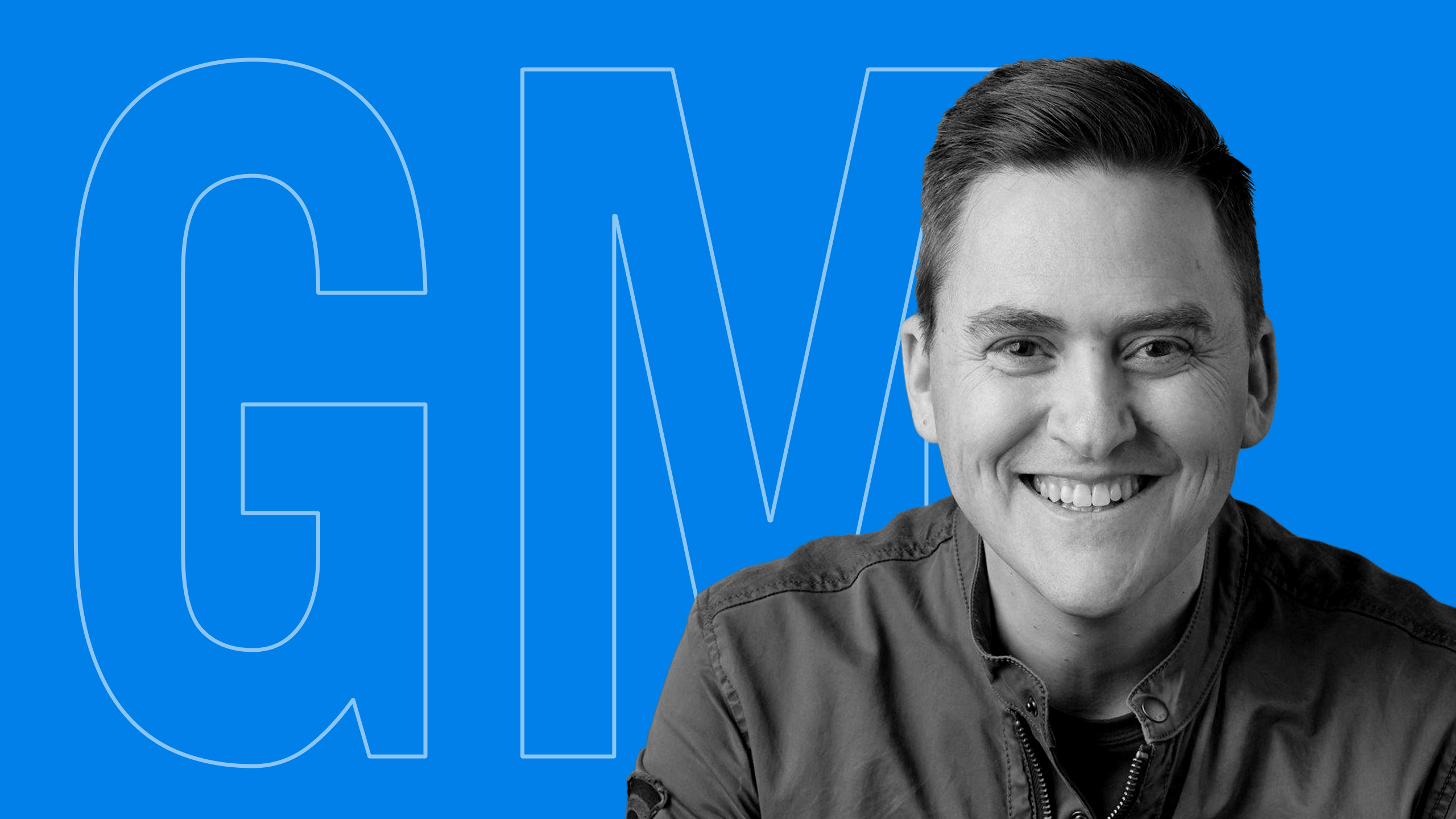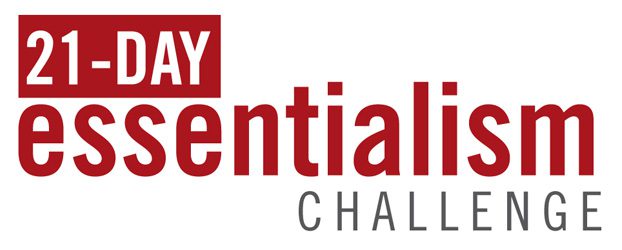Greg McKeown:
Welcome everyone. I’m your host, Greg McKeown, and today is episode three of four about my adventures at the University of Cambridge.
In my book Effortless, I asked an important question, what could happen in your life if the easy but pointless things became harder and the essential things became easier? At the end of this episode, you’ll be able to replace one bad habit with a good one by making the bad one harder and the good one easier. Let’s get to it
To unlock more of your potential, sign up for the One Minute Wednesday newsletter. It’s one of the fastest growing newsletters on the web right now. Go to gregmckeown.com right now to sign up, and you get the first chapter of Effortless for free.
The city of Cambridge is steeped in history and charm. It boasts a magnificent architecture and an unparalleled atmosphere, I think, of intellectual curiosity. The University of Cambridge itself was established in 1209 and is a testament to the city’s rich educational heritage, while its lush green spaces and picturesque River Cam, which by the way, is how Cambridge gets its name, the River Cam, which has lots of bridges on it. So Cambridge, all of that offers quite a serene haven for contemplation and sometimes relaxation too.
The moment you arrive in Cambridge, in fact, you notice how many people ride their bikes. People cycle everywhere. Indeed, it is by far the easiest and fastest way of getting around. So that’s my life now. I cycle to university, and the children cycle with me to Queens, to the business school, to eat, to shop. And every time we do, there is magic in it.
I remember, on, I think, my first day at the university, the director of my program asked me to go on a walk with him, and for two hours, we walked all across the town. We see the churches walk through the parks, cross by the river, and see little beautiful cafes and restaurants all along the way. And at the end of our rich conversation, we stumbled into how cycling had become such a thing. He said, if you cycle here, you are the king of the road. But it didn’t happen by chance.
In recent years, he explained, Cambridge has been taking steps to promote healthier, also more sustainable lifestyles by prioritizing cycling and walking over driving. It’s a multi-year effort in which the leaders have tried to facilitate this shift in behavior, and they’ve been implementing measures to make it more challenging to drive while also making it easier for residents and visitors to cycle and walk.
So as part of their efforts to reduce car usage, the city planners have instituted a whole range of policies. At first, slowly, one thing here, one thing there, and then line upon line and layer upon layer, this strategy has taken effect. They’ve closed certain streets to motorized vehicles. They’ve increased the size of the pavement of the sidewalks, reducing the size of the roads. And one of the things you notice as soon as you try to drive in Cambridge is the total reduction of parking spaces.
So once upon a time, as I’m to understand it, the bustling streets of Cambridge were crammed with cars, engines humming, tires squealing, contributing to the congestion everywhere. And as they thought of the thing that would be most pivotal in changing this, they just thought, well, we’ll take the car parks and replace them with beautifully landscaped parks, public spaces, and cycling facilities, which serves as both an incentive for residents to switch to more sustainable modes of transportation and a means to enhance the city’s aesthetic appeal.
So green spaces have blossomed with vibrant flowers, lush foliage everywhere, and the modern bicycle storage units emerged standing as some sort of testament to this overarching strategy. Now, what this means in practice is that if you try to drive anywhere in the city of Cambridge, it’s extremely annoying, and I’m not hesitant to say that. But at the same time, the moment you’re on a bike, you feel, let’s say, relatively safe, and you can get anywhere faster than you can with a car.
The boundaries, the restrictions have encouraged many residents to rethink their choices and consider alternatives. So there’s this extensive network of safe, well-maintained cycle paths and pedestrian-friendly routes connecting key destinations like the workplaces, cultural attractions, the museums. And so, if you take yourself there, you can picture yourself strolling down the cobbled streets of historic Cambridge. You get to marvel at the ornate facades, the ancient colleges, and the time-honed, stone bridges that arch gracefully over the flowing river cam. You can imagine gliding, and I pretty much do glide. I’m not trying to break any records here through the city on your bicycle, and I know it might sound a little poetic here, but there is something to that fresh air filling up your lungs as you navigate all these charming lanes and alleyways. So when London was dethroned as the best city in the UK, according to the Condi Nast traveler, and was replaced by Cambridge, it didn’t really surprise me.
Now, maybe I’m overstating the point here, but what can we learn from Cambridge’s example? The key takeaway here is that setting boundaries can be a powerful tool for achieving our most important goals. By making it more difficult to engage in unhealthy habits while simultaneously making it easier to adopt better habits, we can create an environment that supports our personal growth and well-being.
So what are some actionable steps that you can do right now to make it harder to engage in an unhealthy habit and easier to adopt a positive one in your daily life?
- Identify the habit you want to eliminate and, importantly, what habit you want to replace it with, right both down and keep them visible as a constant reminder.
- Create tiny obstacles for the habit you want to break.
If you want to reduce screen time, of course, you can set app limits so you can move your phone charger away from your bedroom. I’ve been using the one sec app recently, and all that really amounts to is taking one deep breath before you can get onto the app. The addition of just that little friction is enough to make me aware of the apps that I’m using.
You want to eliminate as many triggers as you can. So whatever the trigger is for the habit that you had before, physically remove them. If you’re prone to eating too much sugar, you’ve got to throw it out. If you’re reaching for the TV remote as your first instinct when you sit on the couch, put it away somewhere. Modify the environment that you are in in order to be able to promote success. Your current surroundings, just like the University of Cambridge, make it easier to indulge in bad habits or making good habits more challenging. But by tweaking that environment over time, you can influence the outcome positively.
Join forces with someone, a design partner who can work together with you towards your goals. You can support each other and hold each other accountable. While, of course, celebrating the successes. I mean, literally, probably the single thing that you can do to make bad habits harder and good habits easier is to surround yourself with somebody who completely embodies what you are trying to become. We eventually do what our friends do. And if you want to read more about this subject, you can read Chapter 10 from Effortless. That’s page 133 or Chapter 14 from Essentialism. That’s page 163.
And if you want to listen to another episode on the subject, go back to one of the first interviews I did on this podcast with the one and only BJ Fogg, who, of course, is the Stanford professor, the great king of Tiny Habits. And you’ll hear, I think, a helpful example of how to put this into place with all of this.
It’s about creating an environment that supports your personal growth and your well-being, and you can start by implementing these actionable suggestions. And soon, you will see that progress so that you can become more of who you really are and less of who you really aren’t.
So whether it’s limiting screen time or encouraging healthy eating, or simply spending more time outdoors, establishing clear boundaries can help you break free from negative patterns and embrace a more balanced, fulfilling, healthy life.
And that’s a wrap on today’s episode. Thank you. Really, thank you for listening. I hope you have enjoyed this little exploration of how boundaries can help you achieve your goals, using the beautiful city of Cambridge as our inspiration. Remember, just like Cambridge, you can set your own boundaries to foster healthier habits and improve your overall well-being.
What is one idea from today’s episode that stands out for you? And what is an action you can take immediately following this episode to begin your journey to implementing it? And who is somebody that you can invite to be on this journey with you?
If you haven’t already done it, please sign up for the One Minute Wednesday newsletter. It’s free, and you’ll get access to a PDF of chapter one of Essentialism and chapter one of Effortless. If you sign up now at gregmckeown.com. Subscribe to the podcast and invite other people to subscribe as well. I’ll see you next time.







